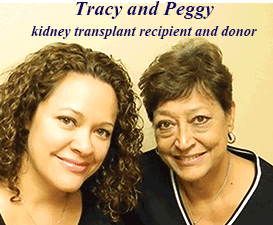
Methodist Transplant Institute at Methodist Hospital Specialty and Transplant has developed opportunities for prospective kidney recipients waiting for a kidney, including living kidney donor transplants. The decision to donate a kidney is a serious one for the donor and the recipient. If you choose to become a living donor, it can be a very rewarding experience. You are giving the gift of life to someone you care about.
What can a kidney donor expect?

The donor evaluation consists of lab work, diagnostic imaging and a psychosocial evaluation. It is recommended that the testing take place at Methodist Transplant Institute. If the donor resides outside of the San Antonio area, most of the testing can be done at one of our outreach clinics or a local hospital. The donor will be required to visit our transplant center at least once prior to surgery. The entire cost of the evaluation, operation and follow-up care related to the surgery is usually paid by the recipient’s health insurance benefits. Typically, donors return to normal activities within two to six weeks.
If you are interested in finding out whether you can be a living kidney donor, fill out our living donor referral questionnaire.
Methodist Transplant Institute at Methodist Hospital Specialty and Transplant is a national leader in exchange transplantation with a team solely dedicated to transplanting patients with living donors who are not a match. Methodist Transplant Institute has a very large database with hundreds of incompatible recipient/donor pairs. Over 250 patients have benefitted from this program.
- Incompatible exchange program: Recipients may have a willing living donor that cannot donate because they are not a match due to incompatible blood types or due to the recipient antibodies. A recipient/donor pair that is willing to participate in this program would be placed in a database to potentially find another recipient/donor pair that could be a compatible match for each other. It can be very difficult to find a suitable exchange pair and the wait can be long. You will be contacted by the exchange team when a potential match is found.
- Compatible exchange program: Another type of exchange program involves exchanging recipient/donor pairs that are “compatible,” meaning they are not sensitized and have compatible blood types. Research has shown that the age of the donor kidney is a strong predictor of long term kidney function. This Kidney Paired Donor Exchange Program offers patients with older compatible kidney donors the opportunity to exchange donors with recipients that have a younger donor who is not compatible with them.In this example, a recipient has a chance to receive a kidney from a younger donor while the other recipient with an incompatible donor is able to receive a living donor kidney transplant from a compatible donor.
We have a large in-house database designed to match donor/recipient pairs managed by a dedicated team of immunologists, physicians and transplant coordinators. Paired kidney donation is a step in reducing the time spent on the transplant waiting list, and increases access to organs for all kidney transplant candidates.
Please call the live donor hot line at (210) 575-GIVE (4483) or (800) 888-0402 if you think you might be a candidate for an incompatible transplant.
